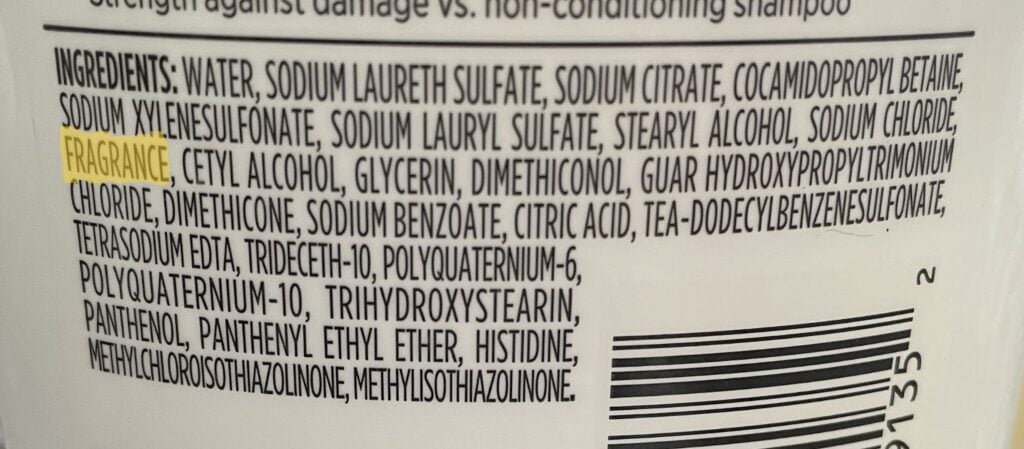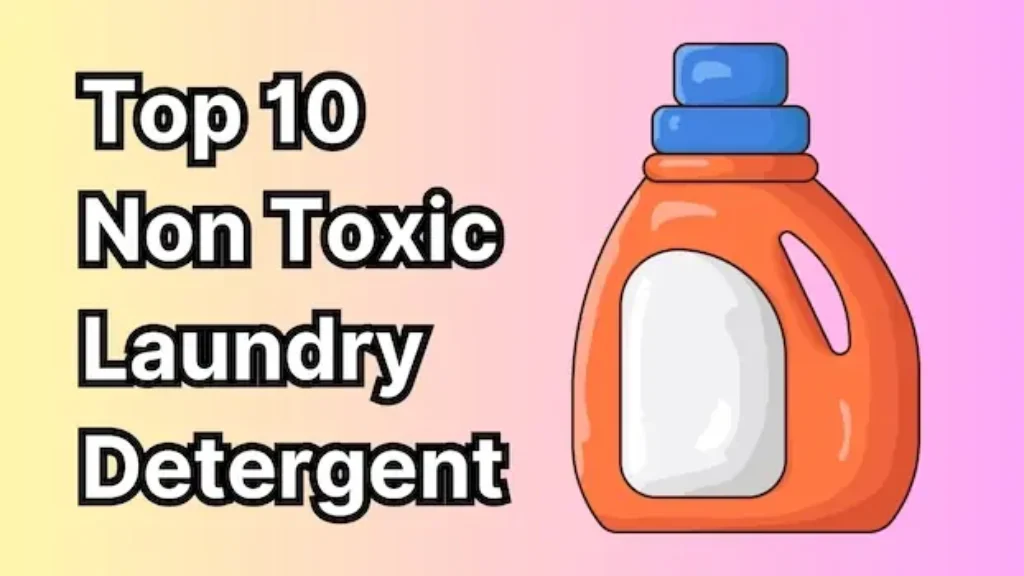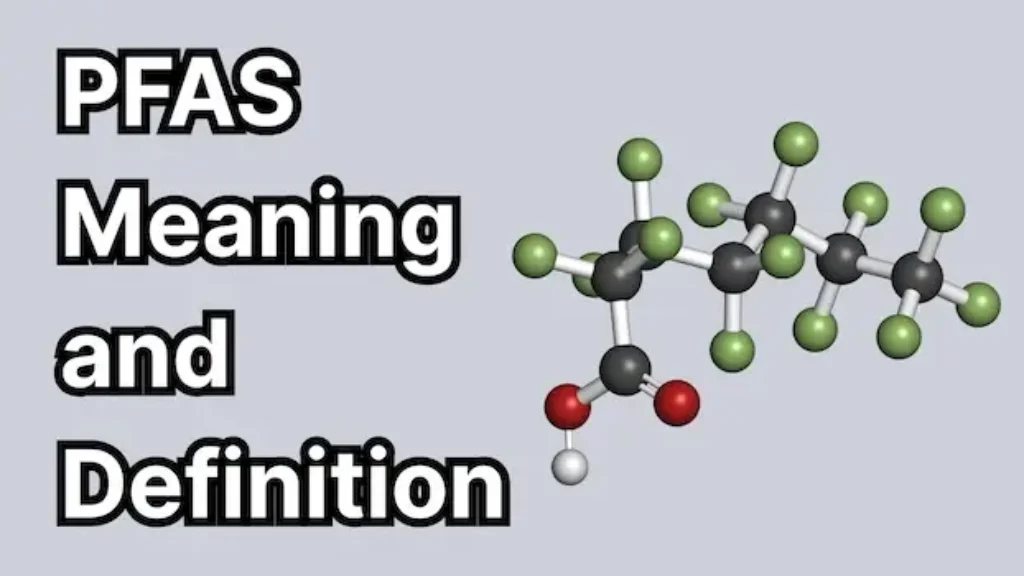Have you ever picked up a bottle of perfume, cologne, shampoo, or scented lotion, check the ingredients on the back, and see the word “Fragrance”? Have you ever wondered “What is fragrance made of?” In this article, I’ll be breaking down the fragrance ingredients list and potential health risks using my professional experience as a scientist to help you stay informed and keep you and your family safe.
According to Civic Science🍃, among individuals who buy personal care products, only around 4-in-10 people tend to carefully review the ingredient list—18% say they ‘always’ check the label, while another 24% report doing so ‘often’ when making a purchase decision.
However, the reality is that not all consumers are well-versed in the various chemicals commonly found in everyday items.
Chemicals like parabens, phthalates, and sulfates may sound foreign to the average person, yet these substances can have a significant impact on our health.
With so many ingredients and chemicals used in products nowadays, it can be a challenge identifying which chemicals are safe and which ones are harmful.
For example, have you ever taken a look at the ingredient list on your favorite personal products and noticed the words “fragrance” or “parfum?”
This seemingly innocuous ingredient can mean that harmful chemicals are lurking in your product, posing risks to you and your family’s health and well-being.

What Ingredients are in Fragrance and Parfum, used in perfume and cologne?
“Fragrance” or “parfum” is the umbrella term used to describe all the compounds and chemicals that make up a product’s fragrance, and is heavily used in perfume, cologne, and other products.
A study published in the journal Regulatory Toxicology and Pharmacology🍃 reveals that a single fragrance product can contain anywhere from 50 to 300 distinct ingredients.
These can include a mix of natural and synthetic ingredients, each carefully selected to create a unique and memorable scent.
In fact, the formulas for “fragrances” or “parfum”, can consist of any of approximately 4,000 chemicals🍃 used by the fragrance industry for a variety of products.
Most Common Fragrance Ingredients List
- Alcohol:🍃 used as a primary solvent to dissolve and stabilize the fragrance oils. (examples: Ethanol or Ethyl alcohol)
- Essential Oils: These are natural aromatic oils extracted from plants, flowers, fruits, herbs, and spices, providing the fragrance notes. (examples: clary sage, frankincense, jasmin, lavender, rose)
- Synthetic Aromatic Compounds:🍃 These are man-made chemicals that mimic natural scents and are often used to create specific fragrance profiles.
- Water: Water is used to dilute the fragrance and help it spread evenly.
- Fixatives/Stabilizers: These ingredients help the fragrance last longer by slowing down the evaporation of the scent molecules. (Examples: Benzyl salicylate, diphenylmethane, and dipropylene glycol (DPG))
- Preservatives:🍃 These ingredients prevent the growth of bacteria and other microorganisms in the fragrance, extending its shelf life. (Examples: Parabens, Butylated Hydroxytoluene (BHT), Phthalates)
Is Perfume or Cologne Bad for You or Harmful?
One of the main issues with the use of fragrance in products like perfume and cologne is that “fragrance” is considered a trade secret, meaning companies are not required to disclose the specific chemicals used to create the scent.
This lack of transparency makes it difficult for consumers to make informed choices about the products they are using on their bodies.
Many of the chemicals found in fragrance have been linked to allergies, respiratory issues, and even hormone disruption.
Some common ingredients found in fragrance used in perfume and cologne include phthalates and parabens, both of which have been the subject of scrutiny by health experts.
Phthalates in Fragrances
Phthalates have been linked to harmful effects on the endocrine system.
Experts have linked phthalates to changes in hormone levels and function🍃, low sperm count and infertility🍃, increased risk of pregnancy loss🍃, and gestational diabetes🍃.
Parabens in Fragrance
Studies have shown that parabens can mimic estrogen in the body🍃, potentially disrupting the endocrine system and leading to hormone imbalances.
Experiments with cell cultures have demonstrated that parabens can lead to the development of carcinogenic processes🍃 in the human breast epithelial cells.
Long-term exposure to parabens have been linked to increased breast cancer cell proliferation and migration.
Fragrance as a Main Cause for Contact Allergic Reactions
Fragrance is a leading cause of contact allergic reactions from personal care products🍃 in both children and adults.
Since the specific chemicals or compounds in fragrances are not disclosed, it becomes impossible to identify the exact trigger of an allergic reaction.
This issue is especially concerning for infants, whose developing skin barrier is more delicate and prone to disruption compared to that of adults.
In the future, certain fragrance allergens will be required to be labeled, although these regulations will not take effect for a few years.
How We’re Exposed to Fragrances
Fragrance chemicals can enter the body through inhalation, skin absorption, and even ingestion.
Exposure through Inhalation
One of the most common ways that fragrance chemicals enter the body is through inhalation.
When we spray perfumes, use scented candles, or apply air fresheners, we are essentially breathing in a cocktail of chemicals that can have serious health consequences.
These chemicals can irritate the respiratory system, trigger asthma attacks, and even contribute to the development of chronic respiratory conditions.
Additionally, some fragrance chemicals have been linked to neurological issues, such as headaches, dizziness, and even memory loss.
Exposure Through Skin Absorption
Skin absorption is another significant pathway through which fragrance chemicals can enter the body.
When we apply perfumes, lotions, and other scented products to our skin, the chemicals in these products can be absorbed through the skin and into the bloodstream.
This can lead to a range of adverse effects, including skin irritation, allergic reactions, and even systemic toxicity.
Some fragrance chemicals have been found to disrupt the endocrine system, which can have far-reaching impacts on our hormonal balance and overall health.
Not Enough Research and Regulations on Fragrance Chemicals
Many fragrance chemicals lack substantial research and safety data🍃, and some have been associated with serious negative health effects.
For example, the chemical Styrene has been deemed a probable human carcinogen by both the National Toxicology Program and the International Agency🍃 for Research on Cancer.
Despite these alarming findings, Styrene continues to be used in many fragrances with no restrictions or regulations in place to protect consumers from potential harm.
The chemicals used in fragrance mixtures are not required to undergo FDA review before being incorporated into products, leaving safety oversight to the International Fragrance Association (IFRA), an industry trade group.
While IFRA sets safety standards based on scientific assessments, this self-regulation raises concerns about transparency and accountability in protecting consumer health.
| Label Term | Meaning | Recommend to use |
|---|---|---|
| Fragrance-Free | Contains no synthetic fragrances; it may still include natural scents like essential oils. | Yes |
| Unscented | May contain masking agents to neutralize odors but not eliminate all fragrance chemicals. | No |
| Natural Fragrance | Cannot trust with current regulations and guidelines. The IRFA allows traces of synthetic fragrance ingredients (solvents, antioxidants, preservatives) in their definition of natural fragrances. | No |
| Fragrance/Parfum/Aroma/Scent | Indication that the product contains synthetic fragrances that have been linked to detrimental human health due to their toxic effects. | No |
Tips for Avoiding Fragrances and Parfums
- Carefully Check Ingredient Lists: Always check the ingredient list on product packaging for terms like “fragrance,” “aroma,” “scent,” and “parfum,” as these indicate the presence of synthetic fragrances.
- Choose Fragrance-Free Products: Choose products labeled as “fragrance-free” to minimize exposure to potentially harmful chemicals.
- Be Cautious with Unscented Products: Avoid relying solely on products labeled as “unscented,” as this does not guarantee the absence of allergenic chemicals. Masking agents may be used to conceal scents.
- Thoroughly Review Ingredients: Even if the ingredients don’t include fragrance/parfum, always thoroughly review the ingredient list to identify any potentially allergenic substances.
Fragrance-free Skincare Product Alternatives
| Category | Product | Description |
| Facial Moisturizer | Amazon Basics Oil Free Facial Moisturizer | Lightweight, oil-free moisturizer suitable for sensitive skin. |
| Body Wash | Aveeno Skin Relief Fragrance-Free Body Wash | Soothing Triple Oat formula for sensitive skin; cleanses and moisturizes. |
| Skin Cream | Amazon Basics Ultra Moisturizing Skin Cream | Ultra-moisturizing cream for sensitive skin. |
| Body Lotion | Eucerin Advanced Repair Body Lotion | Repairs and hydrates dry skin without fragrance. |
| Skin Care Set | Every Man Jack Daily Skin Care Set | Includes fragrance-free essentials for daily skin |
Disclosure: These affiliate links may give us a small commission, and helps to support NonToxicOnly’s mission!
These products cater to sensitive skin and avoid fragrances, making them ideal for those with allergies or sensitivities.
References
- Bickers, David R, et al. “The safety assessment of Fragrance Materials.” Regulatory Toxicology and Pharmacology, vol. 37, no. 2, Apr. 2003, pp. 218–273, https://doi.org/10.1016/s0273-2300(03)00003-5.
- Sprowls, Savannah. “Has Clean Beauty’s Popularity Reached Its Peak?” CivicScience, 28 Feb. 2023, civicscience.com/has-clean-beautys-popularity-reached-its-peak/#:~:text=least%20%27somewhat%20interested.-,%27,do%20when%20considering%20a%20purchase.
- “Fragrance.” Breast Cancer Prevention Partners (BCPP), 24 June 2024, www.bcpp.org/resource/fragrance/#:~:text=Fragrance%20or%20’parfum’%20can%20consist,and%20other%20chronic%20health%20problems.
- R. Hauser, J.D. Meeker, N.P. Singh, M.J. Silva, L. Ryan, S. Duty, A.M. Calafat, DNA damage in human sperm is related to urinary levels of phthalate monoester and oxidative metabolites, Human Reproduction, Volume 22, Issue 3, March 2007, Pages 688–695, https://doi.org/10.1093/humrep/del428
- Aromatics, Alpha. “8 Ways Alcohol Plays a Pivotal Role in Perfume Creation.” Alpha Aromatics, 15 Oct. 2024, www.alphaaromatics.com/blog/alcohol-in-perfume-creation/#:~:text=It’s%20A%20Powerful%20Solvent%20Alcohol%20serves%20as,such%20as:%20flowers%2C%20spices%2C%20resins%20and%20woods.
- “Preservatives.” Safe Cosmetics, 26 Apr. 2022, www.safecosmetics.org/chemicals/preservatives/#:~:text=Preservatives%20may%20be%20used%20in,cosmetic%20and%20personal%20care%20products.
- Shaffer, Rachel M., et al. “Maternal urinary phthalate metabolites in relation to gestational diabetes and glucose intolerance during pregnancy.” Environment International, vol. 123, Feb. 2019, pp. 588–596, https://doi.org/10.1016/j.envint.2018.12.021.
- Liao, Kai-Wei, et al. “Increased risk of phthalates exposure for recurrent pregnancy loss in reproductive-aged women.” Environmental Pollution, vol. 241, Oct. 2018, pp. 969–977, https://doi.org/10.1016/j.envpol.2018.06.022.
- Hauser, R., et al. “DNA damage in human sperm is related to urinary levels of phthalate monoester and oxidative metabolites.” Human Reproduction, vol. 22, no. 3, 7 Nov. 2006, pp. 688–695, https://doi.org/10.1093/humrep/del428.
- Wei, Fang, et al. “Parabens as chemicals of emerging concern in the environment and humans: A Review.” Science of The Total Environment, vol. 778, July 2021, p. 146150, https://doi.org/10.1016/j.scitotenv.2021.146150.
- Pastor-Nieto, María-Antonia, and María-Elena Gatica-Ortega. “Ubiquity, hazardous effects, and risk assessment of fragrances in Consumer Products.” Current Treatment Options in Allergy, vol. 8, no. 1, 23 Jan. 2021, pp. 21–41, https://doi.org/10.1007/s40521-020-00275-7.
- Rádis-Baptista, Gandhi. “Do synthetic fragrances in personal care and household products impact indoor air quality and pose health risks?” Journal of Xenobiotics, vol. 13, no. 1, 1 Mar. 2023, pp. 121–131, https://doi.org/10.3390/jox13010010.
Read Next
Top 10 Best Non-Toxic Candles in 2025

Top 10 Best Non Toxic Laundry Detergents

What is FD&C Red 40 Made of and its Side Effects?

What Is Yellow 5 (Tartrazine) and is it Bad for You?

What Is FD&C Blue 1 and is it Bad for You?

What are Parabens & Why are They Bad? From a Scientist

PFAS: Meaning, Definition, and How to Avoid

What are Phthalates? Pronunciation and Definition

Are Black Plastic Kitchen Utensils Toxic?




